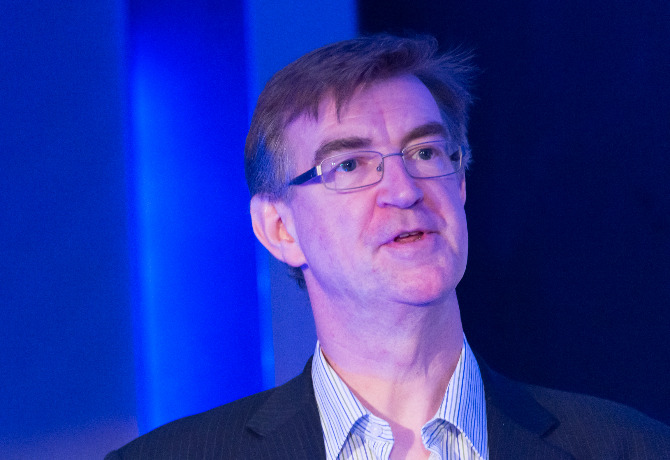Planners, as individuals, must move along if they are not to become a footnote in the history of advertising, writes Tom Bowman, a judge at this year’s M&M Global Awards.
Whither the media planner? Judging by the sentiments I heard at a recent industry event, in which a panel debated “Has media planning lost its mojo?”, you would think the traditional role of planning is on the skids.
The industry right now is fascinating. Programmatic has already shaken up buying. Now the rise of artificial intelligence and machine learning is promising to take ad targeting orders of magnitude further, automating – and improving upon – the planning process, too.
That is causing some seriously furrowed brows in adland. Media planners, whose historic role has been to put together a package of inventory targets for reaching key audiences, are becoming concerned they are losing their pivotal place in the agency. Many are even leaving agencies to start up as independents. The mood on the panel, then, was rather defensive.
Planners are right to take note. When enough data points are available, algorithms are poised to take on many of their traditional roles. However, I think what is evolving is not an “us and them” economy but, rather one in which advertisers need both machine learning and enduring human planning capabilities. One is not a threat to the other.
1. Rise of the machines
Let’s call a spade a spade. Machine learning can bring superpowers to the media planning process that human planners just don’t possess.
Algorithms can process vast quantities of data, at great speed, to find and package up the right audience mix in a more dynamic and up-to-date way.
But learning algorithms go further. Even with few campaign parameters set at the start, when planning campaign code runs, it routinely tests the effectiveness of each media mix, then doubles down on or tries new permutations, seeking greater success every time. Does your planner do that, or does he rest on the laurels of tired historical assumptions?
“Machine learning can test, test and test again until every viable individual audience prospect is reached in the best possible way”
An ad campaign I worked on for 20th Century Fox many years ago used a working assumption that people planned their weekend entertainment on a Thursday afternoon, so we ran their ads as a roadblock on a Thursday afternoon. But this involved a whole lot of assumptions that, today, look weak. Sure, those campaigns worked but today we can do so much better reaching people as they reveal their intent rather than ‘pre-filtering’ in such an assumptive way.
Machine learning can test, test and test again until every viable individual audience prospect is reached in the best possible way, at the best possible time – each time, recycling its learnings back into the system to better inform the current and future campaigns.
2. The human touch
Against these developments, it’s easy to see why people fear the death of the planner. But the future is likely to be more of a symbiosis than suffocation.
Whilst machines excel at examining vast data pools, humans are better at heuristic analysis – that is, learning from diverse experience. Here is where the relationship connects to the revolution…
Get over the fact that much of planning can now take place automatically. Let the machines do what they’re good at – running options, working out media planning at the granular level. But let’s also use human planners to do offline modelling, challenging their brief and doing more of what they are best at.
At its best, media planning is about staying connected to culture – understanding the “who” and the “why” behind buying decisions.
“When enhanced media mix insight forms the basis of a campaign, you can save thousands of pounds in initial results”
In other words, machine learning can give us answers that challenge our assumptions about planning decisions, giving us more insight into what audiences are really doing, and which decisions are actually working.
Do algorithms know, ahead of time, that Euro 2016 will soon be on TV? No, you need humans for that. But, to exploit the best inventory during the course of the tournament, we now have the ability to do that in an automated way, picking and choosing ad slots as their traffic goes up.
And machines can make planners smarter. Insights from machine-derived planning decisions can be filtered back into future campaigns, better informing the person and the work he or she will do every day going forward. When enhanced media mix insight forms the basis of a campaign, you can save thousands of pounds in initial results.
Accept or diminish
This is how the media planner, an endangered species, can secure a long and pleasant life – by embracing the emerging possibilities software affords, working alongside them and up-skilling to master the change.
But those who don’t may indeed be roadkill on the highway to change. This technology is coming. There is one constituency for which planners’ emotional response is, bluntly, by the by. Advertisers will warm to whichever method gives best results, human or algorithmic. The duty of agencies, then, is certainly to satisfy brands in this regard – and that means planners are best advised to move in the same direction.
Planning has not lost its mojo – the discipline of selecting and deploying through the right channels has never been more important.
But planners, as individuals, must move along if they are not to become a footnote in the history of advertising.








